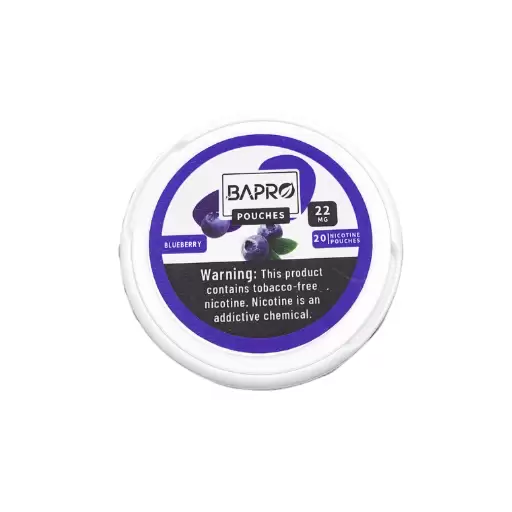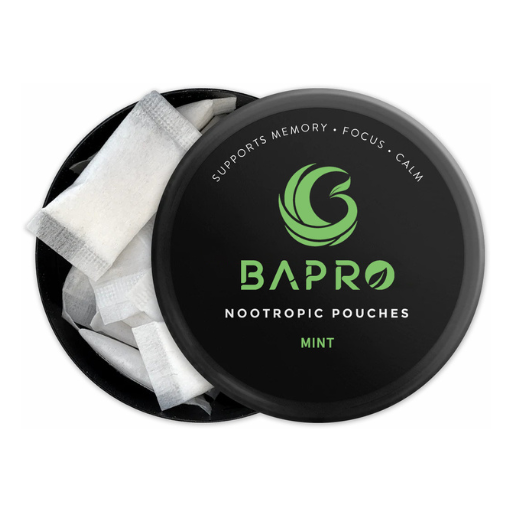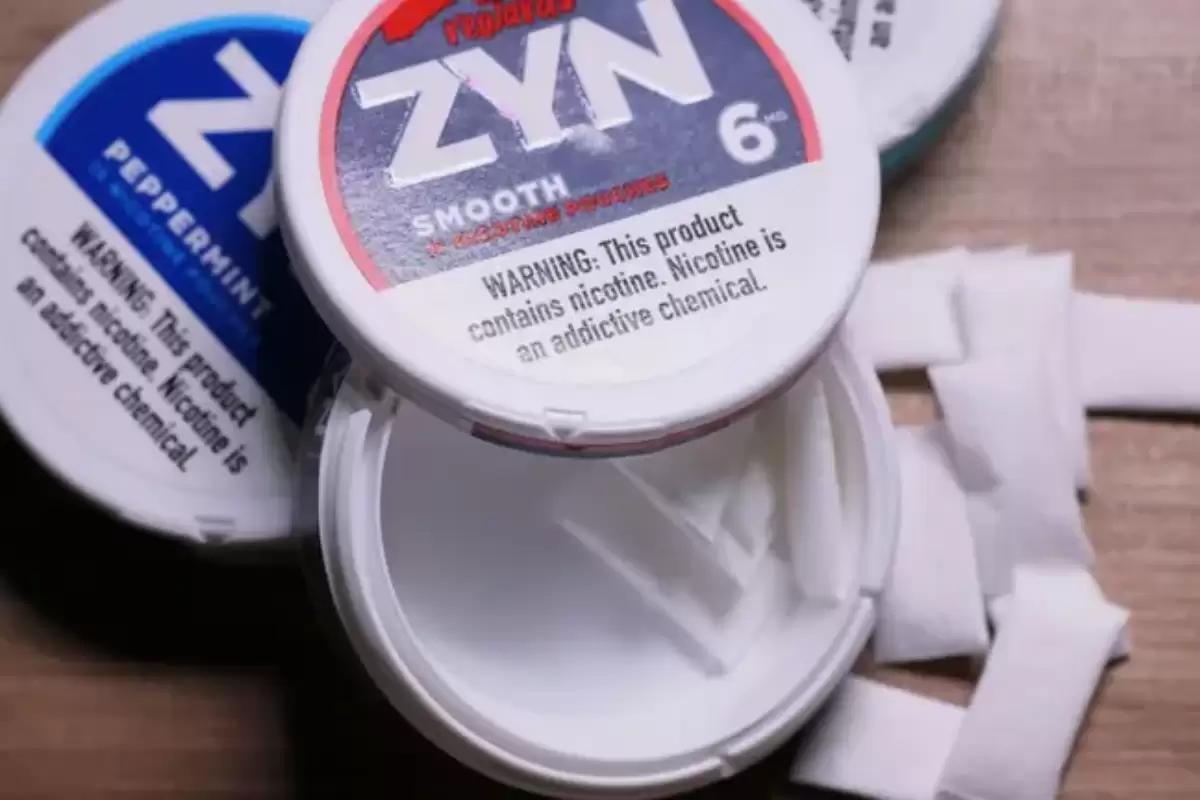Nicotine pouches have been responsible for one of the biggest shifts in the nicotine market in recent years. When it comes to giving up cigarettes but not nicotine, nicotine pouches provide the hit, without the smoke, tar or smell. Though these nicotine the market for frequent nicotine usage is largely dominated by two competitors; Juul and Vape.
Juul, well known for its revolution of vaping, introduces to the market their nicotine pouches made with its same guarantee of quality and customer satisfaction. On the other hand, the brand Vape, who introduced themselves to the market rather recently provides with a different type of nicotine pouches changing the pattern of the industry with its innovative product and brand philosophy. In this analysis we will be contrasting and comparing the two brands to explore in depth the expressed features and peculiarities of them, focusing on both their strengths and weaknesses to understand what each brands have to offer.
The aim of the comparison is not only to give information about the specifications of available products on the market, but to provide the consumer with an understanding of how each brand responds to consumers’ needs and demands. From product innovations, health and regulatory compliance, we will see how Juul and Vape compete with each other to cater to the market driven by the trend of consuming nicotine healthily and discreetly. In conclusion, we will aim to guide consumers on the nicotine pouch market, helping them to make mindful choices that best suits their lifestyle and nicotine use.
Nicotine Pouches Brand Overview and History
At the same time, the tale of nicotine pouch’s entry into the game of nicotine delivery is inextricably tied to the innovations and adaptations of brands such as Juul and Vape. Every brand brings its history, ethos and strategy to the game, and this shapes their position in the market and their effect on the pouch story.
Juul: Pioneering a Vaping Revolution
Juul entered the scene as a disruptive innovator and a true vape brand that broke through and became one of the biggest names in the business. From the beginning, our goal was to provide adult smokers with a real alternative to cigarettes. Juul’s form factor and nicotine salt set a new standard and the company became the closest thing you could consider to Big Tobacco 2.0. In juuling pouch, we adhere to that same spirit. We’re dedicated to being a smoke-free, better-for-you alternative for adult smokers and nicotine users. We’ve worked hard to restore our commitment to quality and safety for the trust and respect of our regulators and the public. Juul will regain the credibility and public trust we had when we launched. We will stand by our mission of helping adult smokers live better lives.

Vape: Redefining Nicotine Consumption
Less well-known than Juul but with a dedicated following is Vape, which has been able to find a place in the nicotine pouches market. Vape emphasises diversity and affordability. It is a product born with, what it spots as, a whole new world of flavours that can be blended and enjoyed both by adults who want a less harmful alternative to tobacco cigarettes, as well as a wider new generation of nicotine users around the world, across different cultures and diverse taste preferences. It states a clear commitment to natural ingredients and undertakes to produce a clean way to enjoy nicotine, which is addictive but needs to be consumed in certain ways for it to feel pleasurable. Vape is a new entrant to the market and, as such, is using modern marketing and community-building as avenues to increase its reputation and visibility, competing for market share with incumbents such as Juul.

Comparative Analysis: Ethos and Development Strategies
The contrasting development trajectories of Juul next to Vape illustrate the fluidity of the nicotine pouch market. Juul’s tour de force in design innovation and product design complemented the company’s bold ambition of seeking to provide smokers with a ‘satisfying, noncombusted alternative to cigarettes’. Although it produced rapid growth and a dominant position in the market, Juul had to reckon with path dependent trajectories of regulatory waters and cultural baggages over vaping.
In contrast, Vape’s business model relies on product variety and naturalistic formulations, focusing more on satisfying consumers who like to experiment and who might not distance themselves as much from a perceived ‘organic’ nicotine experience. Vape’s growth strategy entails talking directly to its user base, rallying feedback into an iteration-happy product development machine.
These brands represent two sides of the zeitgeist nature of some nicotine pouches. Juul, with its heritage as a pioneer of vaping and its pivot of late to the responsible side and protection of compliance, and Vape, the fresh-faced youngster of vaping that posses both a fresh start and positive sign of natural ingredients that play into its alternative product aim to provide an outlet for consumer choice. Together, these products represent a nascent industry that might someday dominate the landscape of nicotine products.
Product Range and Specifications
In some ways, nicotine pouches are about variety and innovation – areas in which Juul and Vape excel, albeit in different areas. Juul, like Swedish Match, has developed full product lines according to their brand ethos and market positioning. They’re speaking to the fine tastes of nicotine connoisseurs.
Juul’s Nicotine Pouch Offerings: Precision and Quality
Juul has translated its reputation for precision and quality from the vaping world into its nicotine pouches. Focusing on delivering a consistent and satisfying nicotine experience, Juul’s pouches are designed for adult smokers and nicotine users looking for a discreet, smoke-free alternative. The brand offers a limited but carefully curated selection of flavors and nicotine strengths, ensuring that each product meets its high-quality standards. This approach aligns with Juul’s goal of providing a reliable and straightforward nicotine delivery system, without overwhelming users with too many options.
Vape’s Approach: Diversity and Innovation
Different to the singular product approach of Juul, Vape offers a broad variety of nicotine pouches. ‘In Vape nicotine pouches, we try to be more diverse and to keep a low-threshold for novel technologies. We take our cues from consumer feedback. For instance, we offer nicotine pouches that do not have a tobacco flavour. At Vape, we try to innovate as much as possible by offering flavoured varieties that our customers like,’ says Olof. ‘Our nicotine pouches are extremely tasty, while the product design makes user issues like excessive drooling less of an issue. Many consumers list our nicotine pouches as the best-flavoured product on the market.’ Vape’s approach of broad targeting and appealing to a global palate was also strongly influenced by their distribution strategy. ‘We knew that we would be able to distribute our products all around the world. For the taste, we focussed on Sweden and the rest of Scandinavia, but also expanded to other flavours that would be interesting for a global audience. We wanted to make good nicotine pouches that everyone, anywhere, would be comfortable using.’
Unique Formulations and Technologies
Juul and Vape utilise different pouches, where the formulation and the technology applied both make a difference in the ultimate user experience. Juul deploys nicotine in salt form for its pouches, which both mimics theine in the mouth. In Vape’s pouches, the focus is more on leveraging natural taste and a patented nicotine release mechanism, leading to ‘the same taste from the first puff until the last puff in the can’.
Analysis of Product Design, Packaging, and User Experience
Nicotine pouches offer a completely different user experience to Juul or Vape – and their looks and packaging reflect this – but they encompass elements of branding, and these are all aspects that Juul and Vape are keen to promote in their sales pitches or packaging. Juul’s packaging is beautifully bland, very smooth, which is fitting for what the company sees itself as: a modern, no-nonsense, image-focused interceptor of otherwise addicted human beings. Each Juul is designed for ease of use, and for invisibility in adult life.
Yet while Smokey puts the health risks up front, Vape goes for colour and information emphasising flavour choices, and the fact that the e-liquid in the pouch is not derived from petrochemicals. Another way in which Vape conveys accessibility is in how its packaging allows for users to continue their activities. Where Smokey’s plastic tube requires help to extract its contents, Vape’s zip-up pouch can be discreetly handled even in public.
Conclusion
Looking at the niches of Juul and Vape, we can see that the differences between Juul’s classic but thorough questionning tube and Vape’s wild beard and rainbow confetti pouches are representative of a broader market split. While Juuls attract people with a preference for quality, specification, reliability and simplicity, fans of Vape pouches seem to be attracted by their variety, natural ingredients and aesthetics. The contrasting approaches of these brands when it comes to advertising indicate the dynamic nature of the nicotine pouch market, and hints at the idiosyncratic and contrasting needs of people using these products.
Health and Regulatory Compliance
In this largely health-constrained, regulatory-constrained world, health and regulation set up the parameters for the technology development and how nicotine pouches are marketed. Nicotine pouches put health and regulation entirely in the foreground. Compare that with products such as Juul and Vape.
Health Implications of Nicotine Pouch Use
With nicotine pouches still having nicotine, though smoke-free, the habit – and any dependency and cardiovascular risks that might follow – is still there. Responsible use and clean, safe devices are emphasised for these products on both sites: Juul states that the device is ‘not intended for people who do not currently smoke or vape,’ while Vape says that its products are ‘meant to be used by existing adult smokers’. Further health warnings – not to use if you are a non-smoker, a pregnant woman or with certain health conditions – appear in bold on the sites.
Juul’s Regulatory Navigation
Juul’s tumultuous path through the regulatory gauntlet is nothing new, considering its previous experience with youth appeal issues and marketing. Juul has responded to the pressure with some major changes by reformulating products, limiting flavours, and bolstering age verification. Such moves put Juul into compliance with the health-related safety standard of its competitors – and backspedalling on danger to consumers.
Vape’s Compliance and Safety Features
Vape is newer to market, less burdened with past accusations, and has taken a number of preventative steps in ensuring standards of safety and compliance that go far beyond those of many alcohol producers. Its ingredients and nicotine level are set out clearly, its packaging and product designs sought to reduce risks of underage access and use, its compliance reaches across diverse regulatory environments (it must ensure it can operate in the markets where it sells its products).
Comparison of Safety Features and Consumer Advisories
In fact, both Juul and Vape have developed safety features and consumer warnings to address health-related concerns and regulatory requirements. With the goal of reestablishing trust, by incorporating warning labels and education about the risk of nicotine use, Juul is taking concrete steps to enhance the safety of its product and its consumers. Likewise, Vape has commercialised its packaging and marketing to convey the potential health effects of nicotine use, to aid in decision-making by responsible adult users.
Conclusion
For brands like Juul and Vape, navigating the health and regulatory compliance landscape poses a big challenge, which seems to be clear in how the two companies adopted their various approaches. Being a safety-driven, consumer-oriented and regulatory-compliant brand will play a considerable role about how successful these brands will be as the niche grows.

Market Presence and Accessibility
Looking at the market reach and accessibility of Juul and Vape reveals a lot about their market strategies, customer reach, and ability to pivot in reaction to changing regulatory environments. Looking at each brand’s distribution, pricing and market reach strategies will give insight into how they compete with and establish brand loyalty in the nicotine pouch market.
Juul’s Market Presence
Juul, famous for its e-cigarettes, capitalised on its public profile to launch nicotine pouches directly to consumers. Juul had also established a distribution channel in multiple countries with which to sell its nicotine pouches to adult smokers who were looking for alternatives. While Juul should get credit for providing smokers with another way to switch from combustible tobacco, it has had its access restricted at times and has had to remove certain flavours due to regulatory scrutiny of its market presence. Nevertheless, Juul’s foresight in partnering with other companies and adhering to regulatory compliance has helped it maintain a significant part of the market for nicotine pouches.
Vape’s Approach to Accessibility
Unlike Juul’s focus on ubiquity through in-store availability, Vape’s market access and presence are strategically directed towards select demographics via web-based and social-media-driven distribution channels. As a result, Vape doesn’t appear to be subject to the same marketing rules. It has undercut the regulatory frameworks that have driven Juul out of various markets – and it is doing so online, allowing much more direct and rapid access to the buyer persona information it needs to keep its nicotine pouches available for its intended customer pool wherever they are around the globe.
Pricing and Regulatory Impact
The approach to pricing with Juul and Vape (e-juice) can also reflect how these brands position themselves in the market and how they respond to regulatory pressures. Juul more often differentiates itself with premium pricing, reflecting their established brand and pledge to quality. Vape’s pricing model is more competitive, reflecting an effort to appeal to as many potential users as possible, as well as encouraging trial with adult smokers. As regulations and tax laws fluctuate, prices and access to these items vary.
Consumer Preferences and Brand Loyalty
In the competitive world of nicotine pouches, understanding consumer tastes is an essential way of keeping brand-loyal stakeholders. Juul, with its reputation for craftsmanship and reliability has a loyal customer base despite its former shady past, whereas its competitor, Vape that promotes diversity and ‘natural’ products, tends to attract consumers who prefer more diversity and ‘natural’ nicotine but with the same buzz. But most of all, the predominant marketing strategies (customer service, community, feedback, etc) bias the field of consumer tastes.
Conclusion
Both companies’ market presence and availability show us how they’re expanding their brands, adapting to their consumer base and navigating regulatory requirements. Juul’s reach and reputation are both supported by having a strong brand and distribution footprint, while Vape can use its digital reach and price advantage to keep pressure on the incumbent and position itself as the David to Juul’s Goliath. The nicotine pouch market hasn’t finished evolving and, for either Juul or Vape to remain strong market leaders, they’ll have to continue to shape their brands for what’s ahead. The market requirements and regulatory landscapes will also continue to change, and for these two brands to continue to resonate, they must remain at the forefront of that evolution.
Final Comparison and Recommendations
Having engaged in an extensive comparison of Juul and Vape nicotine pouches in four key dimensions (brand origin and history, product range, health and regulatory compliance, and market traction), it can definitely be said that each brand offers somewhat distinct strengths. The differences and similarities in the brands in question are now summarised before moves on to a conclusion in which the potential users of these brands are offered recommendations. The future prospects for these brands and the nicotine pouch market in general, are also outlined.
Key Differences and Similarities
- Approach to Brand Ethos and History: Juul was engineered on the back of the founder’s intention to revolutionise the vaping industry, which has filtered into the company perception of nicotine pouches (quality and user experience). Vape, however, is the new kid on the block but has staked its ambition on diversity and innovation (natural ingredients and a variety of flavours).
- Proposition: Product Range: Juul: simple smoother flavoursMake or break: Vape: wider variety of flavours and strengthsGlobal strategy: Juul: restricted range of simple products that don’t disappoint Vape: one size doesn’t fit everyone; variety keeps people coming back.
- Health and regulatory compliance: Both brands have used their identity as a safeguard against safety or regulatory scrutiny, albeit coming from different directions. Juul went from a safe narrative to make its way through the intense scrutiny, and then adapt and reaffirm its benefits to adult smokers. And Vape went from a safe narrative to establish safety and transparency, from day one.
- Market Presence: Juul relies on building on its brand and distribution; Vape relies on digital and targeted marketing to make brand connections.
Recommendations for Potential Users
For any Juul- or Vape-curious smokers or vapers looking for nicotine pouches, while it ultimately comes down to personal flavour preferences or product innovation one wants to support, it’s clear that those who want a simple well-optimised nicotine experience from a trusted brand should stick with Juul, while those whose heart is set on hundreds of flavour profiles and strengths are more likely to take a ride over to Vape’s side of the market.
Future Outlook
This bodes well for nicotine pouch market growth. I believe that both Juul and Vape seem well-placed to ride the wave of rising demand for smoke-free nicotine alternatives, as long as the brands stay nimble and strive to keep up with evolving consumer shifts and regulatory frameworks. Adjustments to the health impacts of nicotine pouches and technological innovations related to how products are designed and nicotine is delivered are likely to be key factors shaping the forward direction of this market. As part of an evolving trend toward being more health-conscious and leaning into increased regulatory frameworks, it is likely that Juul and Vape will be able to continue to evolve their brand and remain relevant to existing and new markets.
Conclusion
By comparing Juul vs Vape nicotine pouches, it is clear that both brands have their merits, and are potentially good alternatives to ‘conventional tobacco products’ for adults when it comes down to specific likes and dislikes related to flavour profile, product experience, and brands’ values. It is difficult to say whether one (or the other) will come on top, since, as the Life Hacker article indicates, ‘there is an enormous amount of personal preference tied up in all of this’. Ultimately, the success of Juul, Vape, and scandinavian nicotine pouch brands will largely boil down to whether they are able to stay afloat in the ‘tough balance’ between market dynamics, health concerns, and regulatory limitations.











